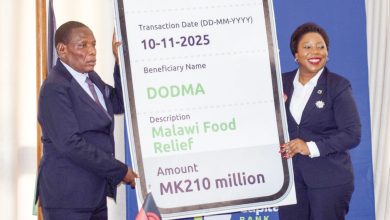IMF sees gloomy outlook on forex
The International Monetary Fund (IMF) has said Malawi could encounter a $2 billion (about K3.5 trillion) deficit in its net international reserves (NIR) by the end of this year.
NIR is the difference between a country’s readily available foreign assets and its short-term foreign currency liabilities.
The $2 billion constitutes roughly 20 percent of the country’s gross domestic product (GDP) currently valued at $11 billion (about K19.2 trillion), highlighting significant worries regarding economic stability.
This is happening at a time Malawi has been employing some emergency measures to bolster foreign exchange reserves and narrow the spread between the official and parallel market rates.
In an e-mail response, IMF resident representative Nelnan Koumtingue said for years, Malawi’s NIR has been negative with an estimated deficit of $1.2 billion (about K2 trillion) in 2022.
He said: “This negative balance reflects the high level of external obligations, particularly in the context of debt restructuring.
“We usually look at gross international reserves as these are foreign assets that are readily available for a country to use for its international payment obligations and to act as a buffer against external shocks. It is generally recommended to maintain gross reserves at a minimum level, typically expressed in months of prospective imports.”
Koumtingue said for a country such as Malawi, a healthy reserve level would be at least three to four months of prospective imports.
Currently, the Malawi Government is accelerating discussions for a comprehensive overhaul of its external debt, which IMF projects to reach 31.6 percent of GDP this year, indicating a growing reliance on external funding.
Ministry of Finance and Economic Affairs data show that a large part of that Malawi’s debt consists of nearly $500 million (K875 billion) owed to the African Export-Import Bank (Afreximbank) and an additional $400 million (about K700 billion) to the Trade and Development Bank (TDB).
In March this year, the Reserve Bank of Malawi (RBM) amended foreign exchange controls to promote import substitution and incentivise the export sector while curbing use of informal sources of funds for importation.
Among others, the central bank reduced the mandatory conversion ratio on export proceeds for exporters with exemption from the mandatory conversion of export proceeds for manufacturers meeting criteria issued by the central bank.
RBM also reduced the mandatory conversion ratio from 70 percent to 50 percent for non-governmental organisations and introduced a verification requirement for importers to demonstrate that their imports have been financed through the formal banking channel.
However, RBM data, on the other hand, show that economy’s total reserves position declined to $569.5 million (about K997 billion) or an equivalent of 2.3 months of imports cover in February 2025 compared to $570.6 million (about K999 billion) or 2.31 months of imports in the preceding month.
In its July 2025 Malawi Economic Monitor, the World Bank acknowledged that the country is still facing challenges in bolster foreign exchange reserves and narrow the spread between the official and parallel market rates.
The bank showed that the spread between the bureau rate and official rate was sitting at about 10 to 12 percent while the gap between the parallel market and official rates has widened, reportedly peaking at over 150 percent in early 2025.





